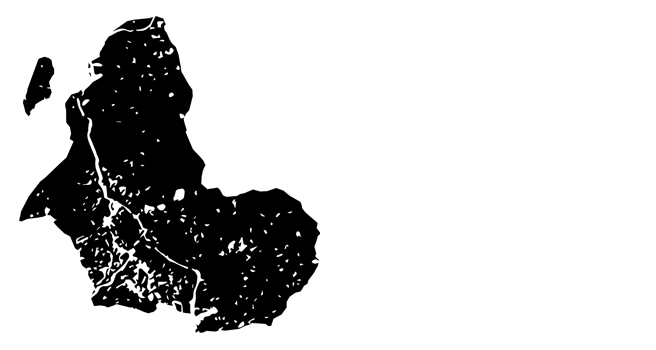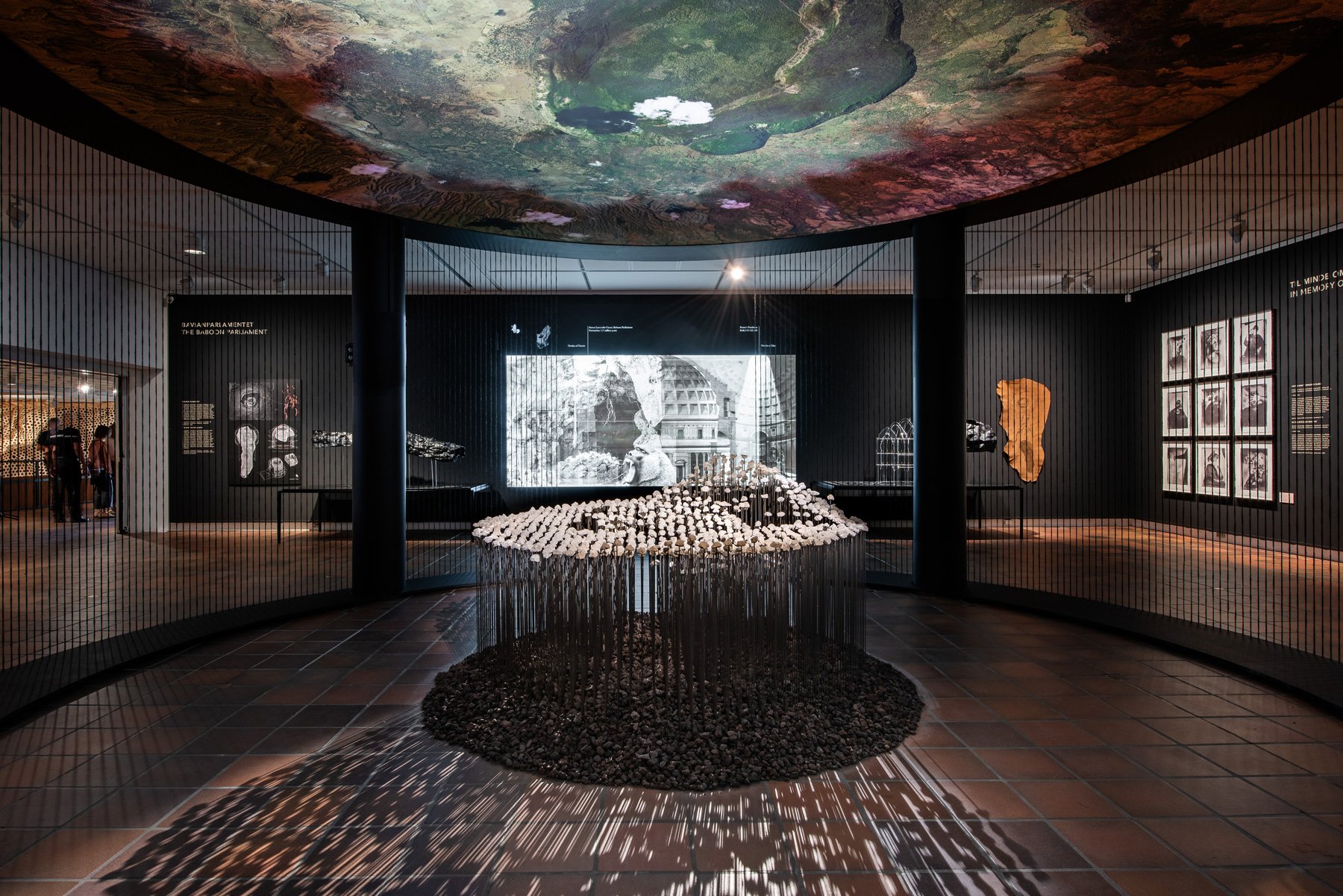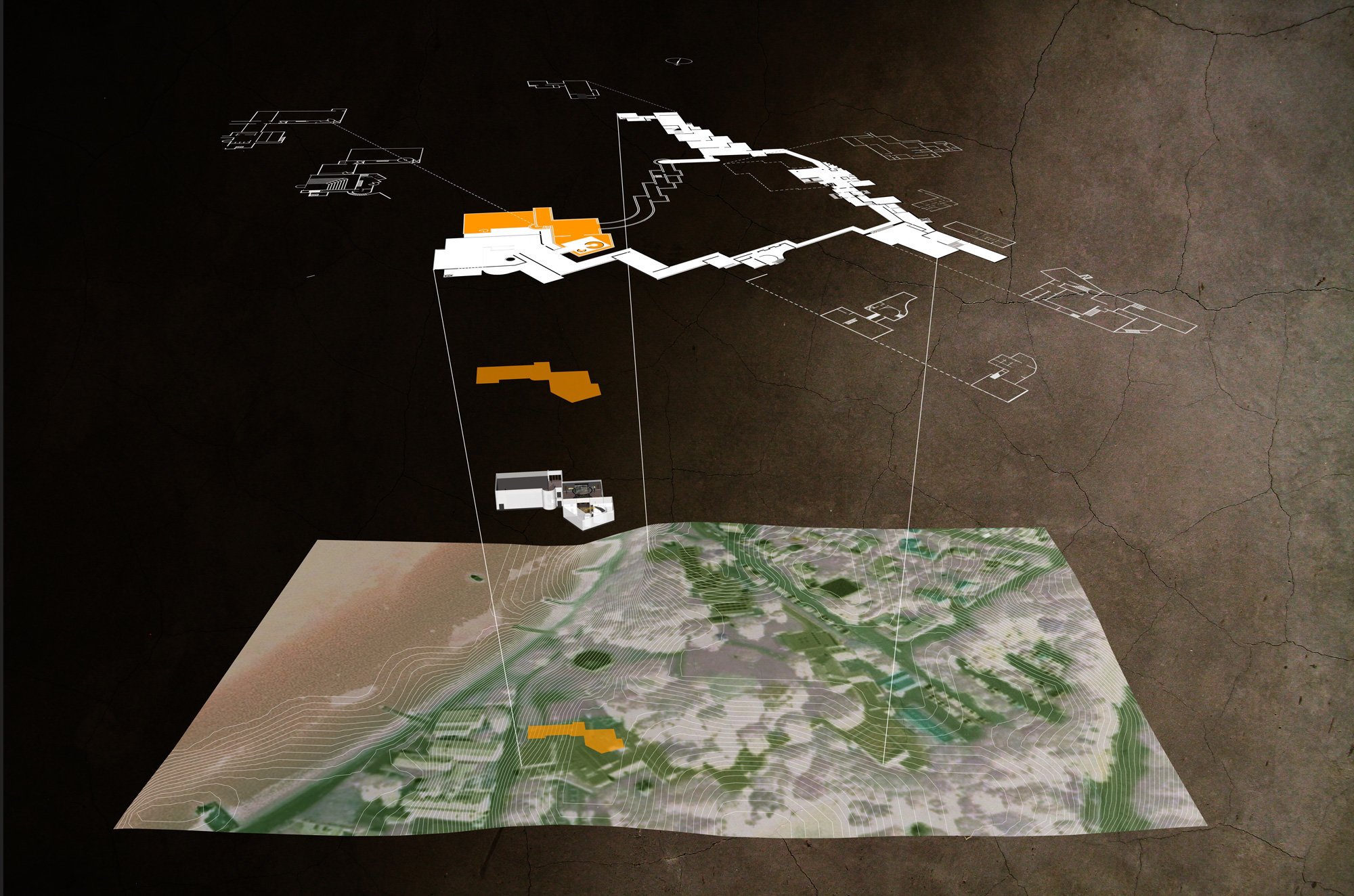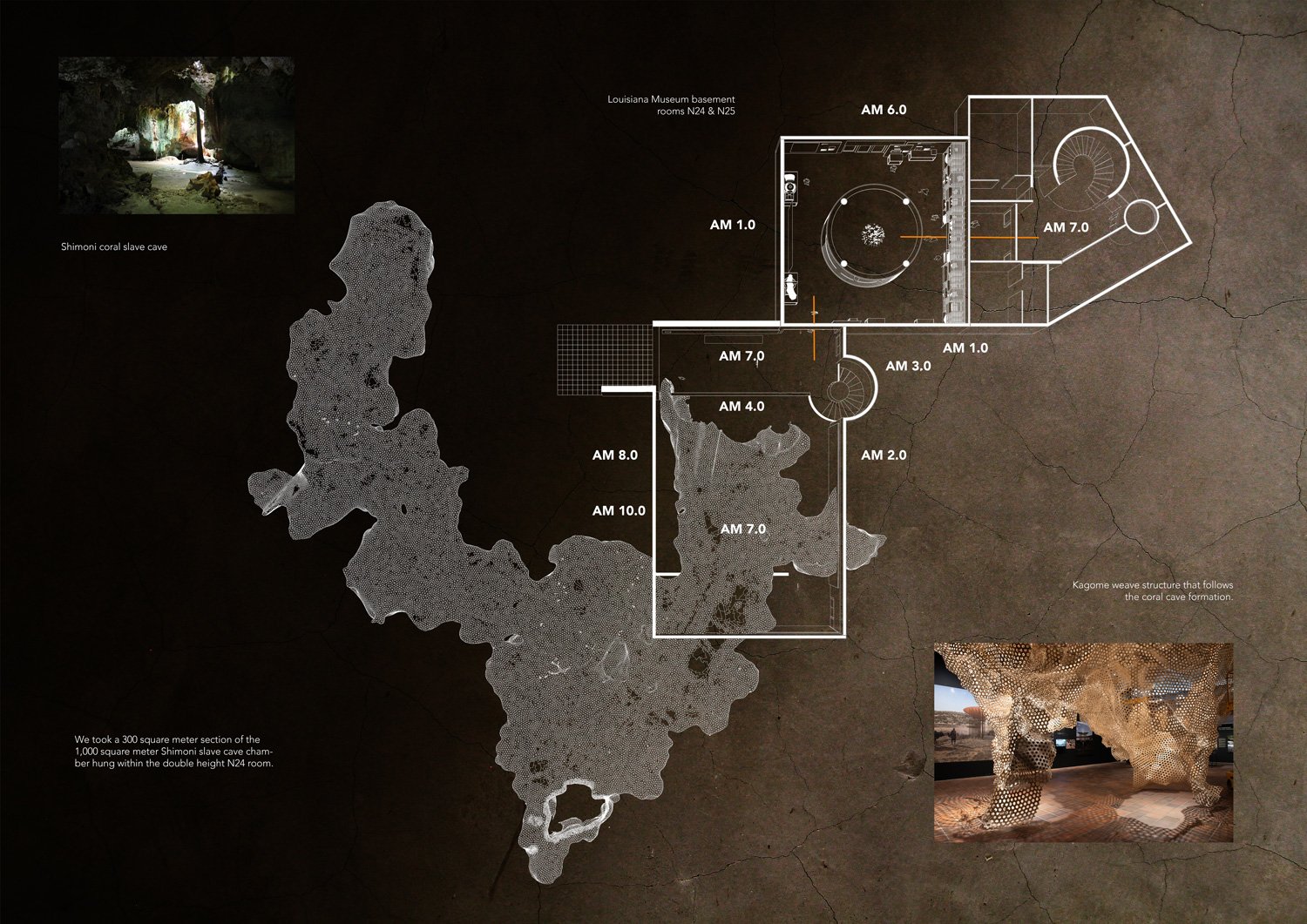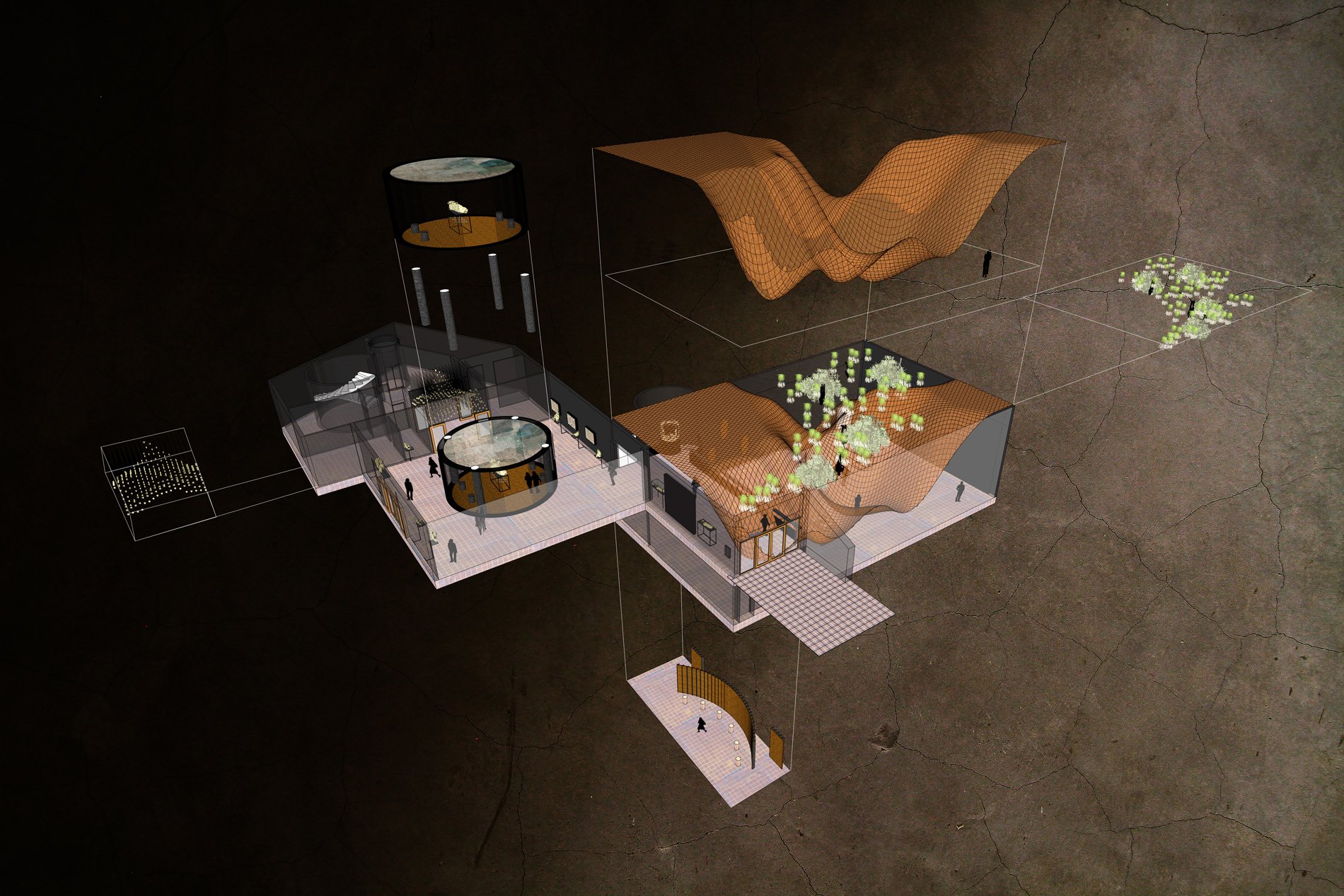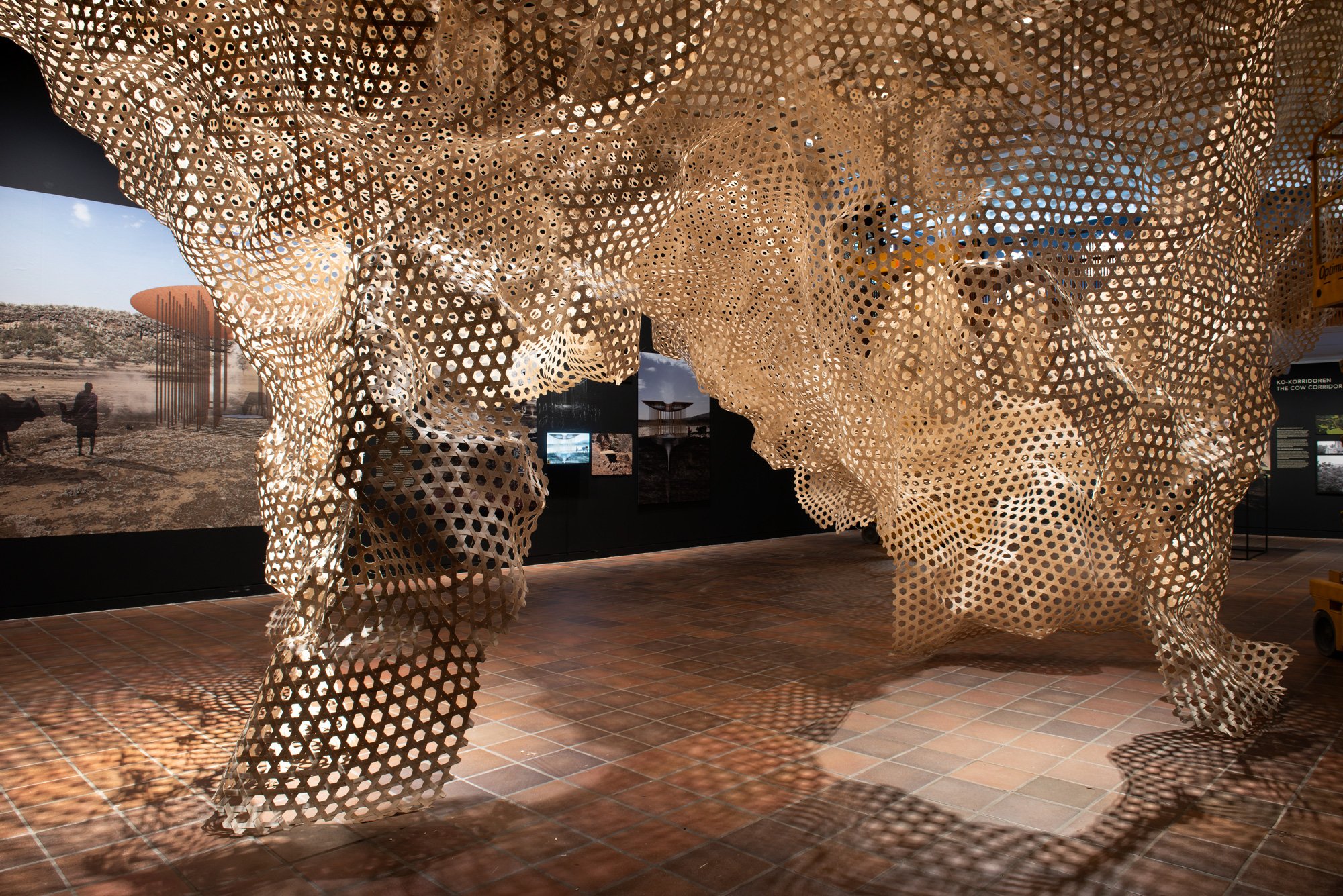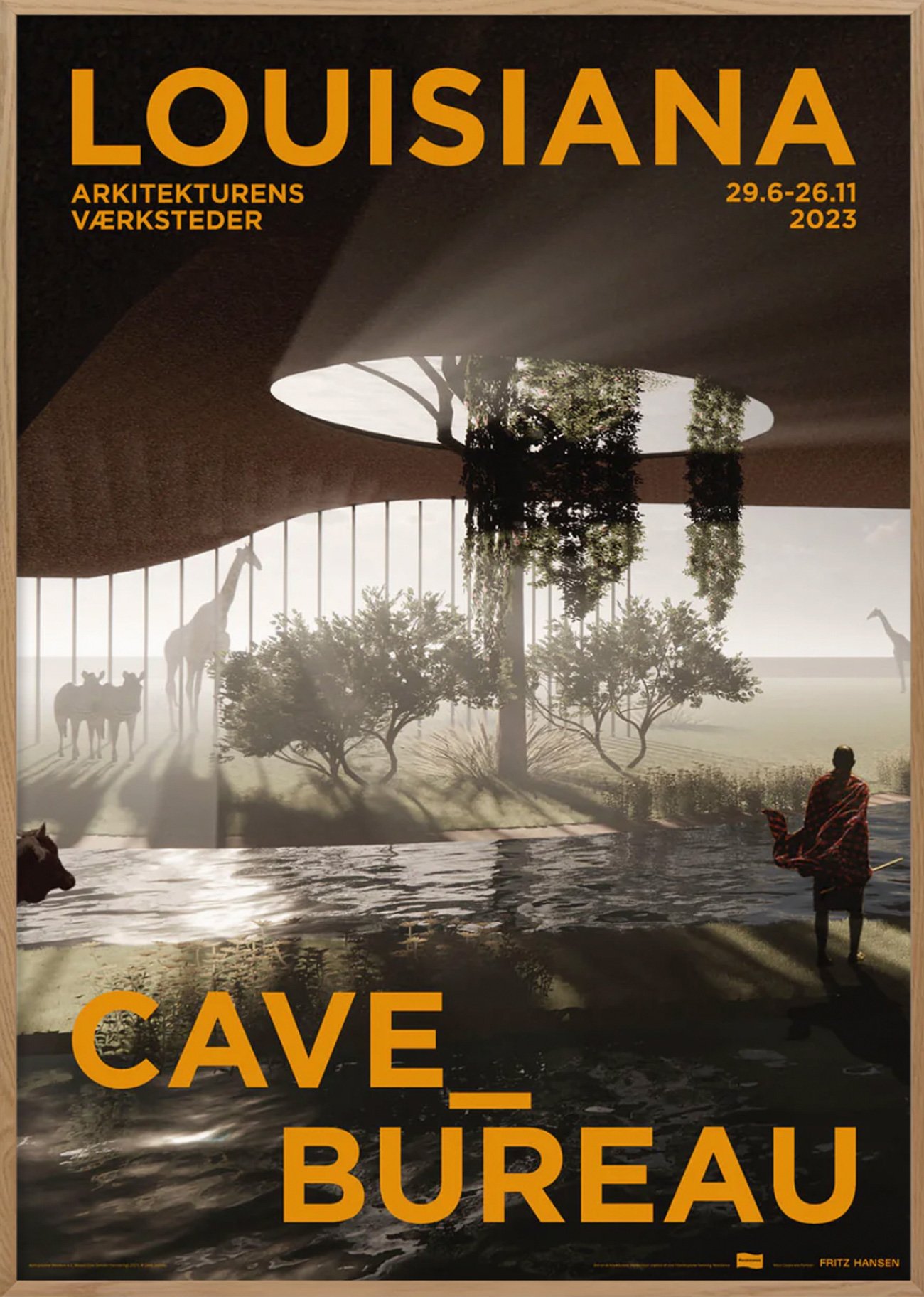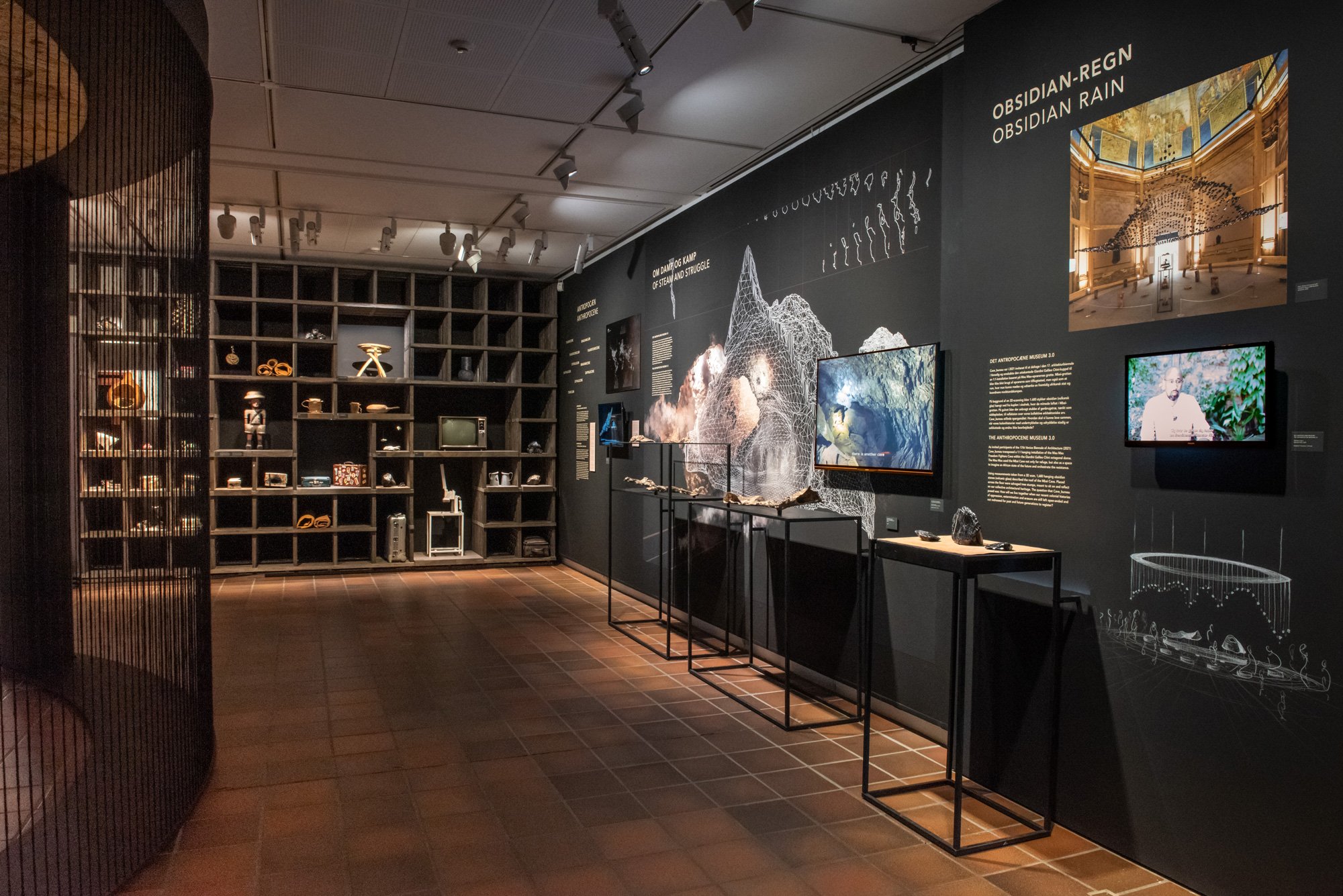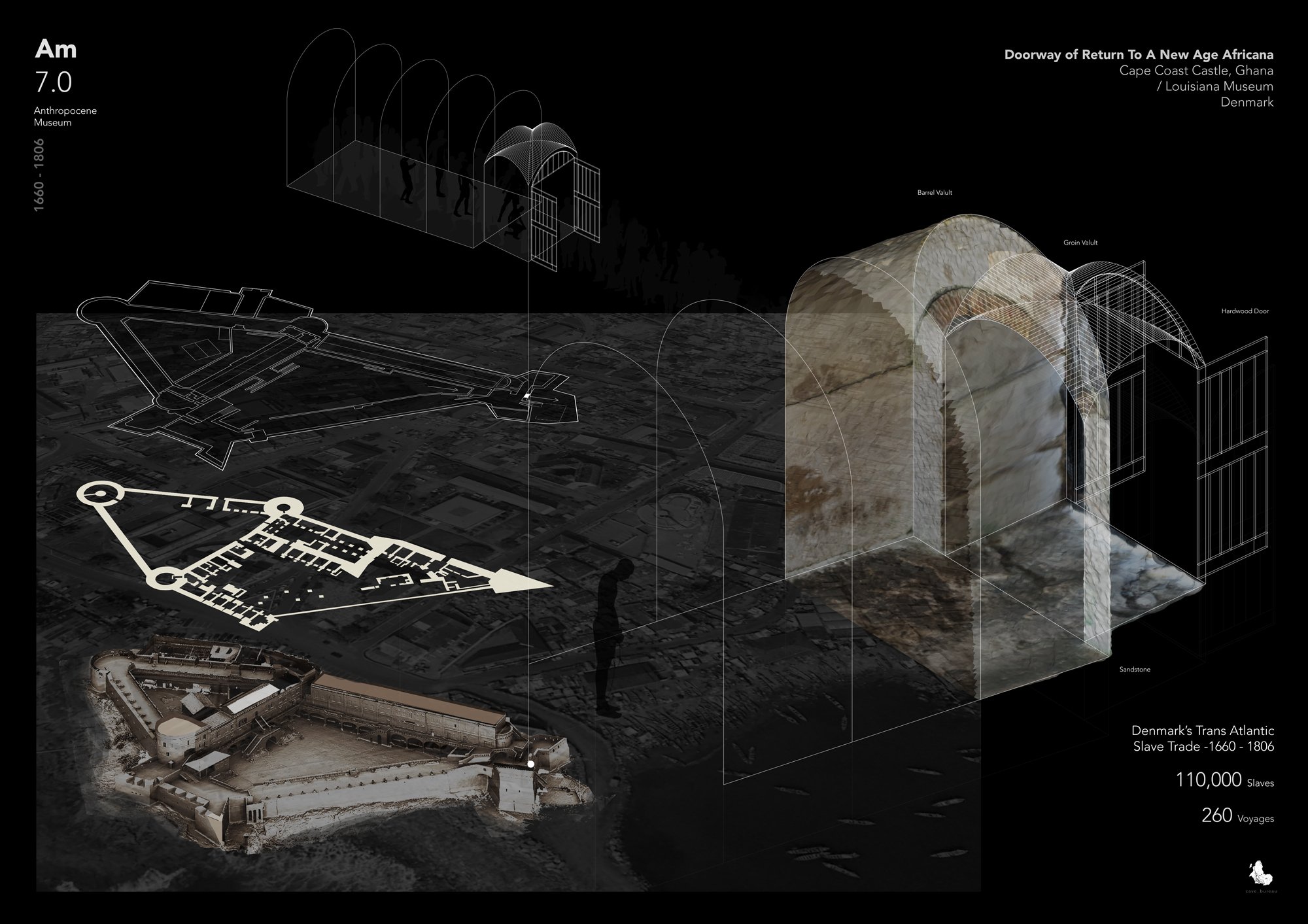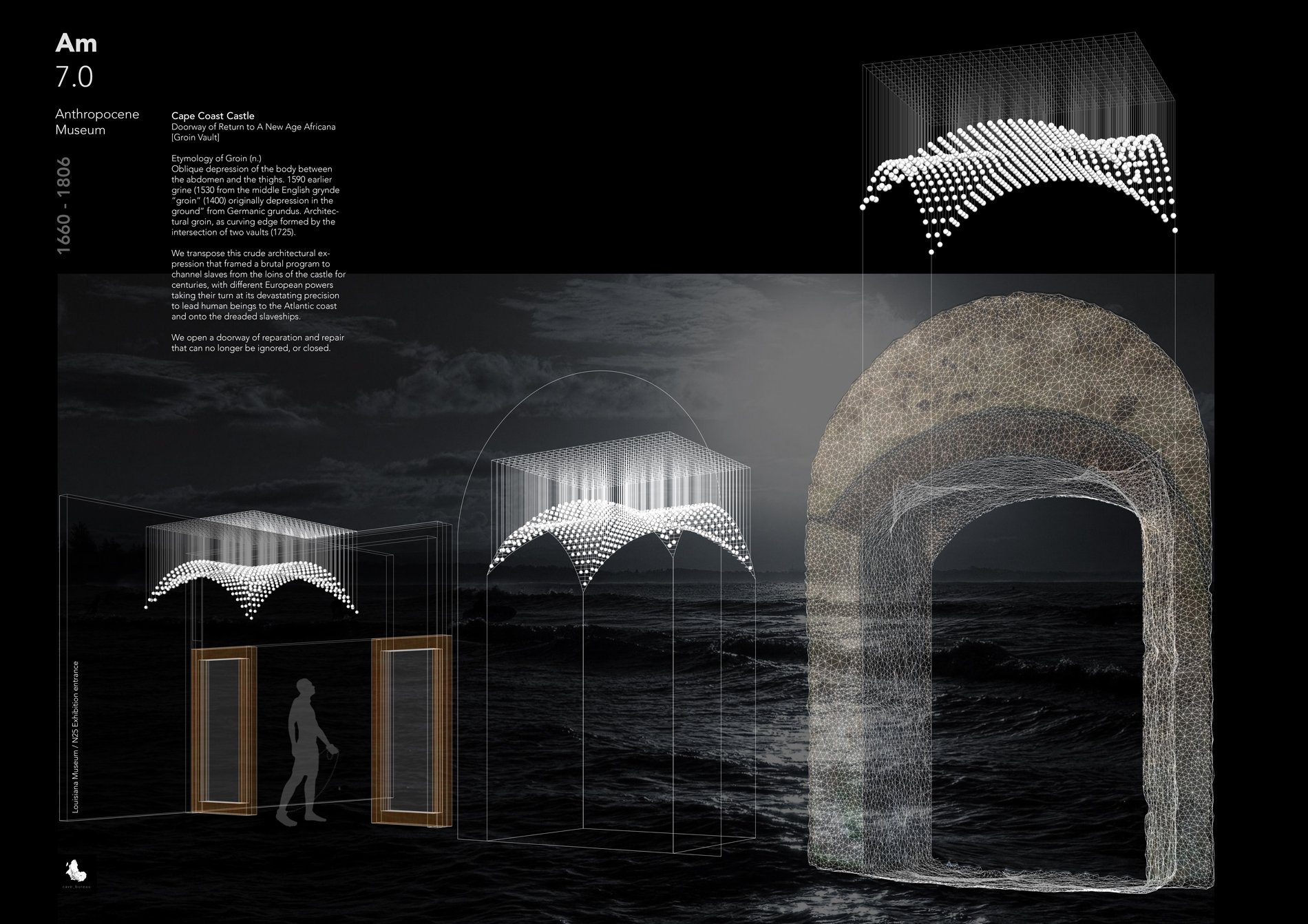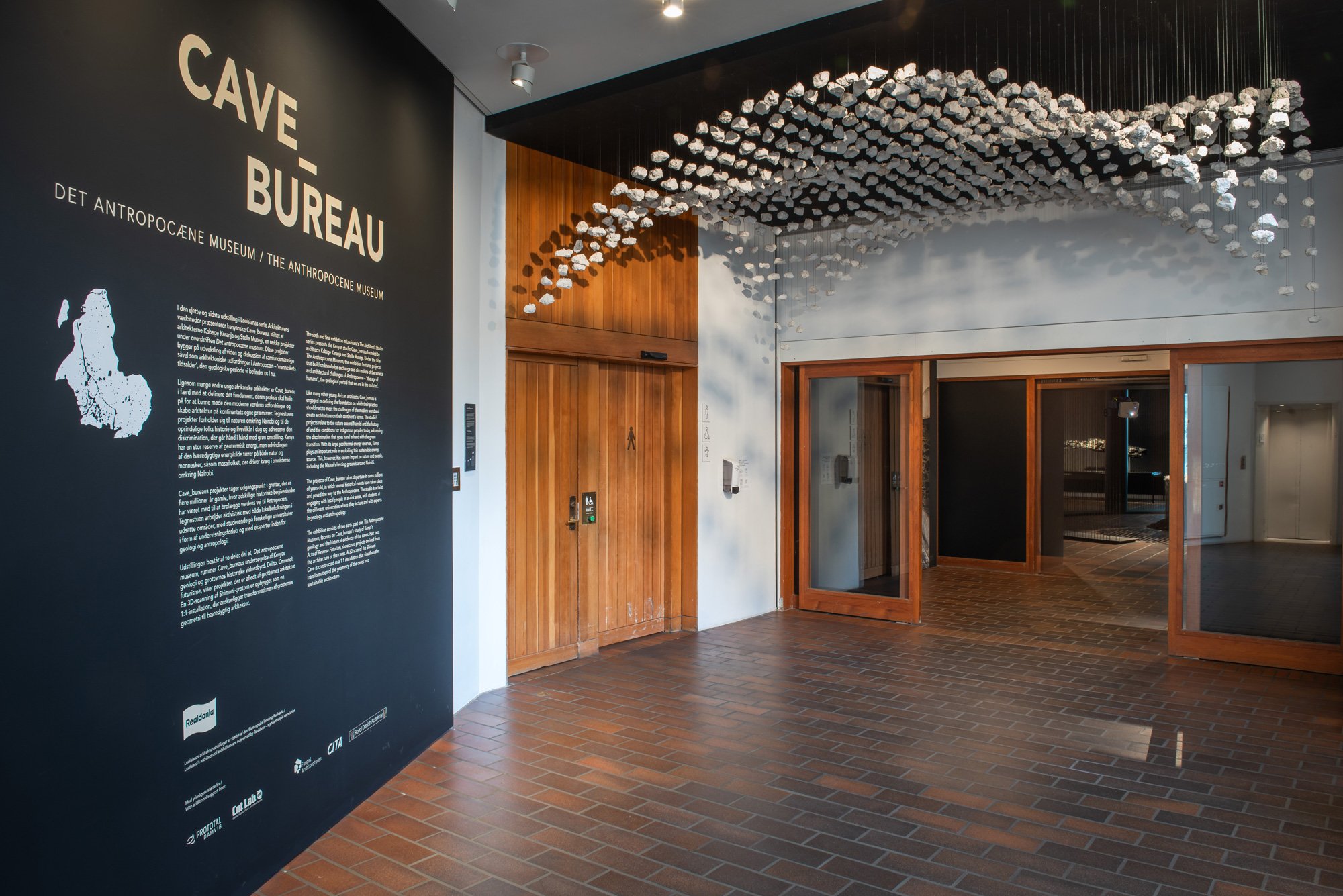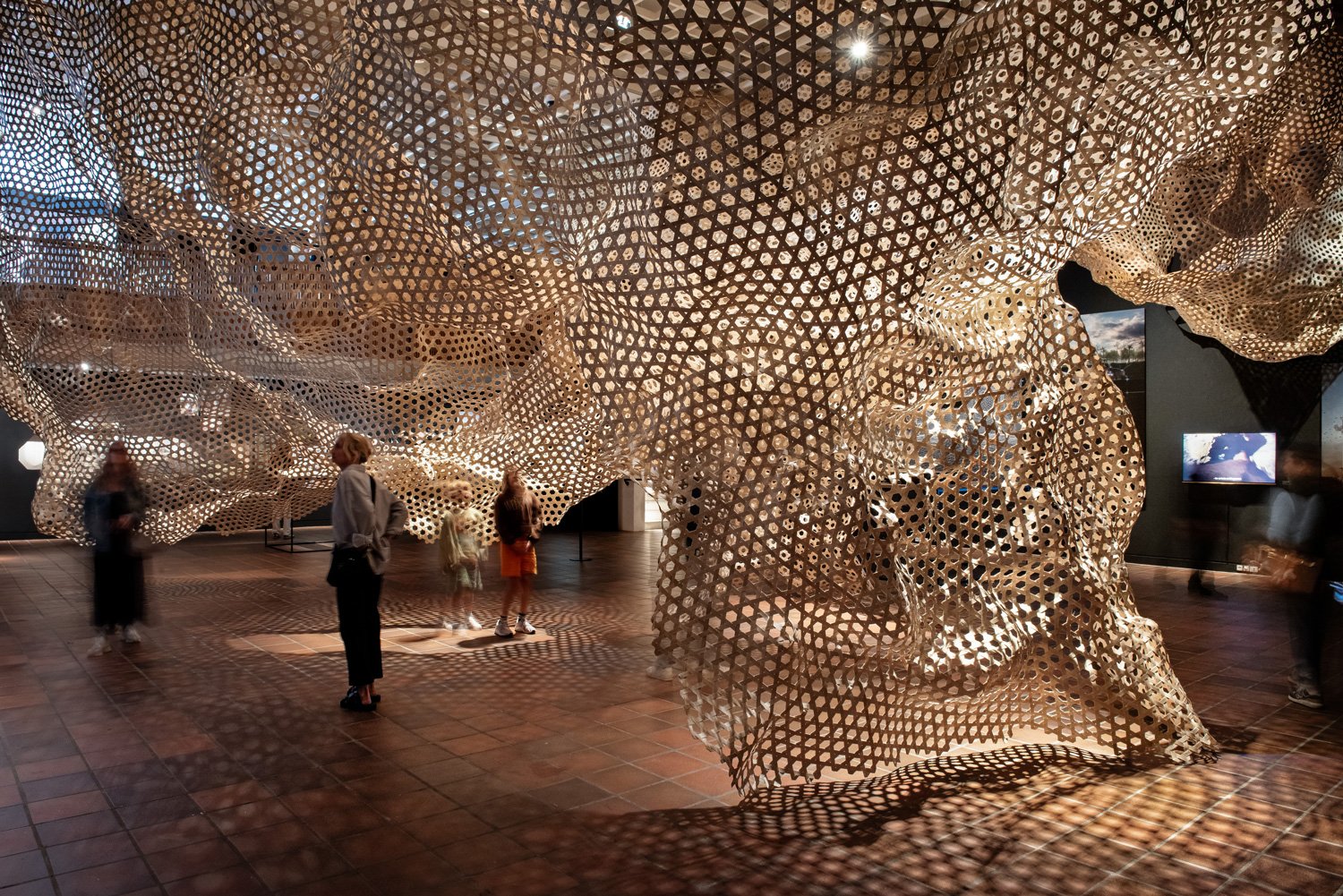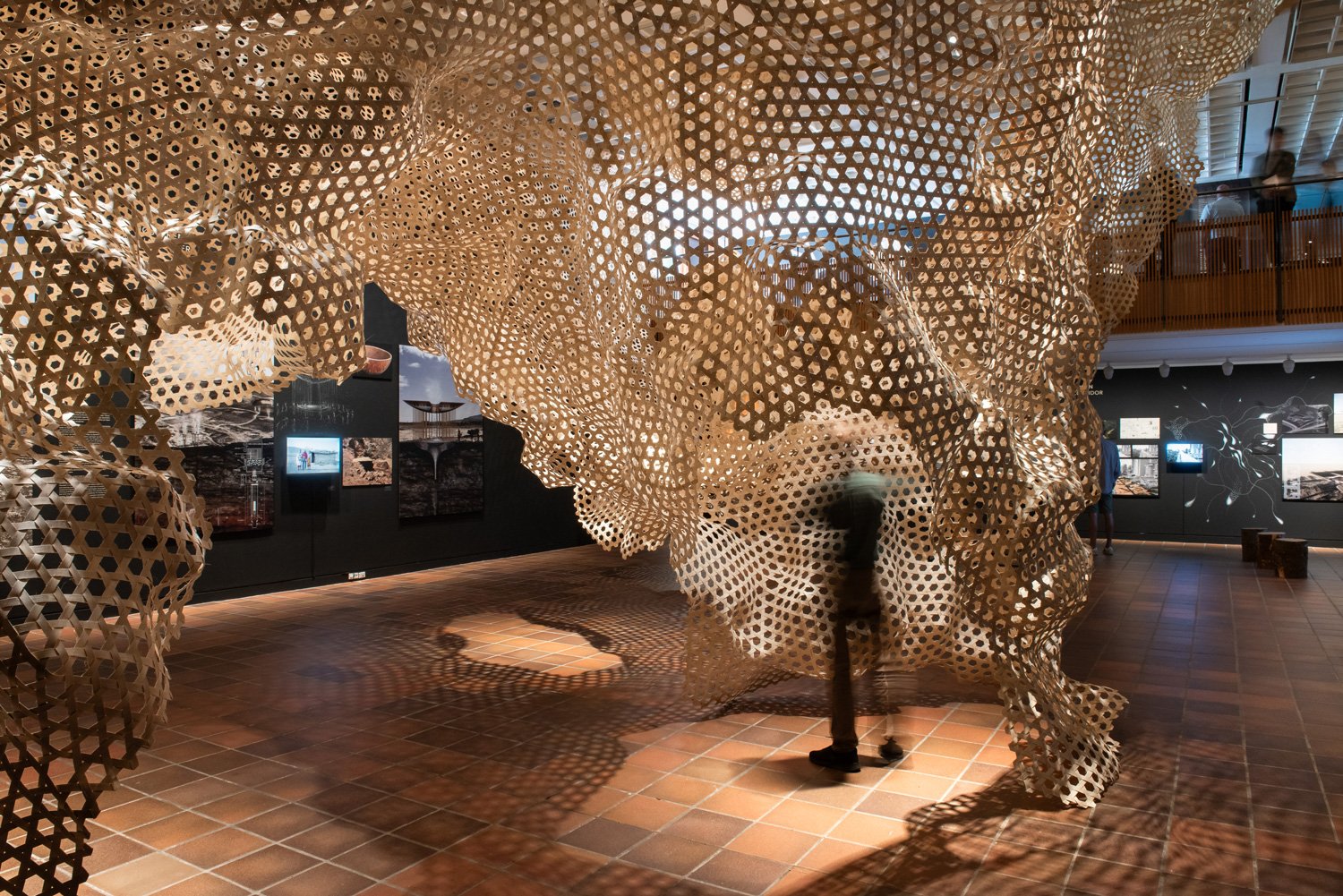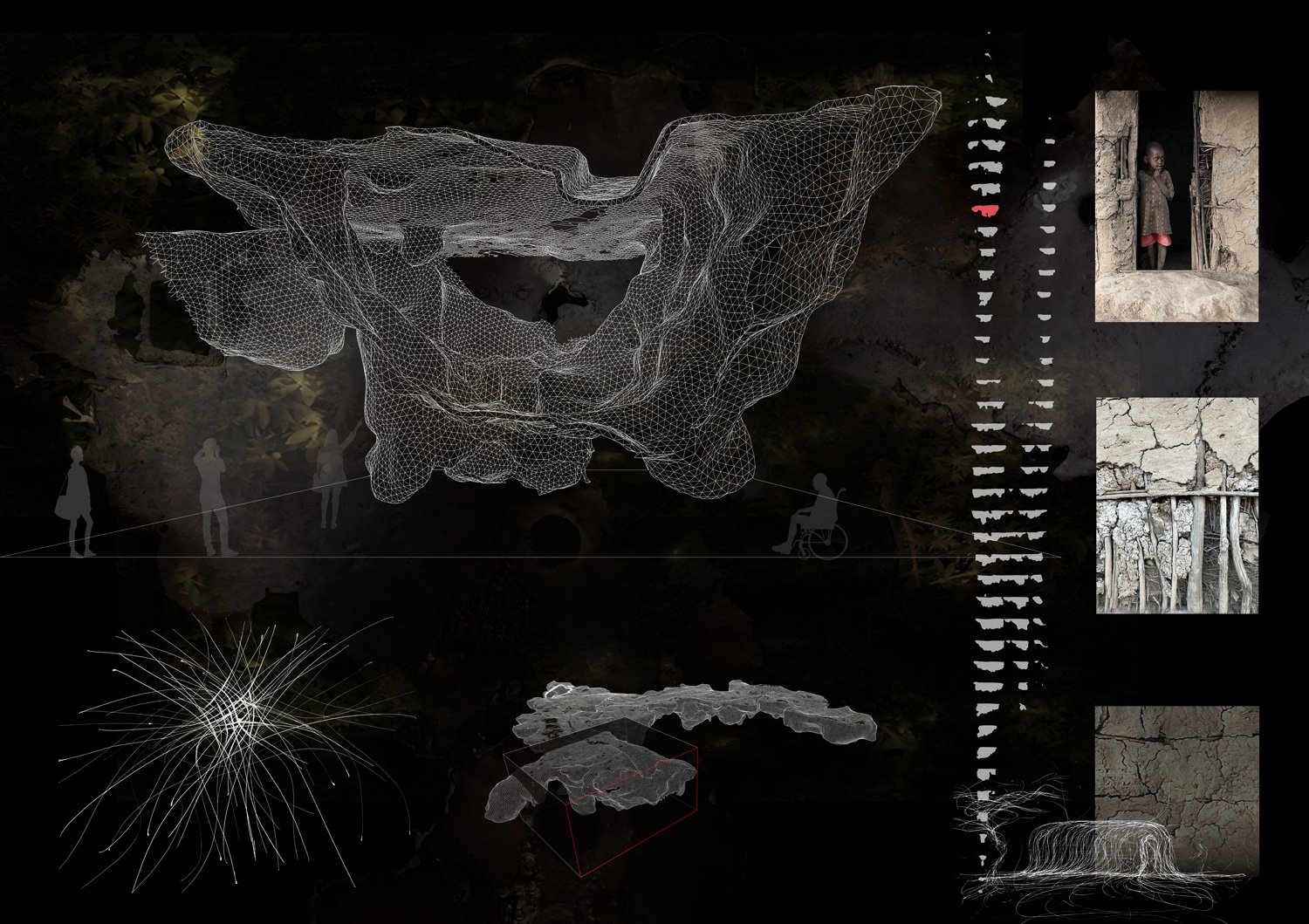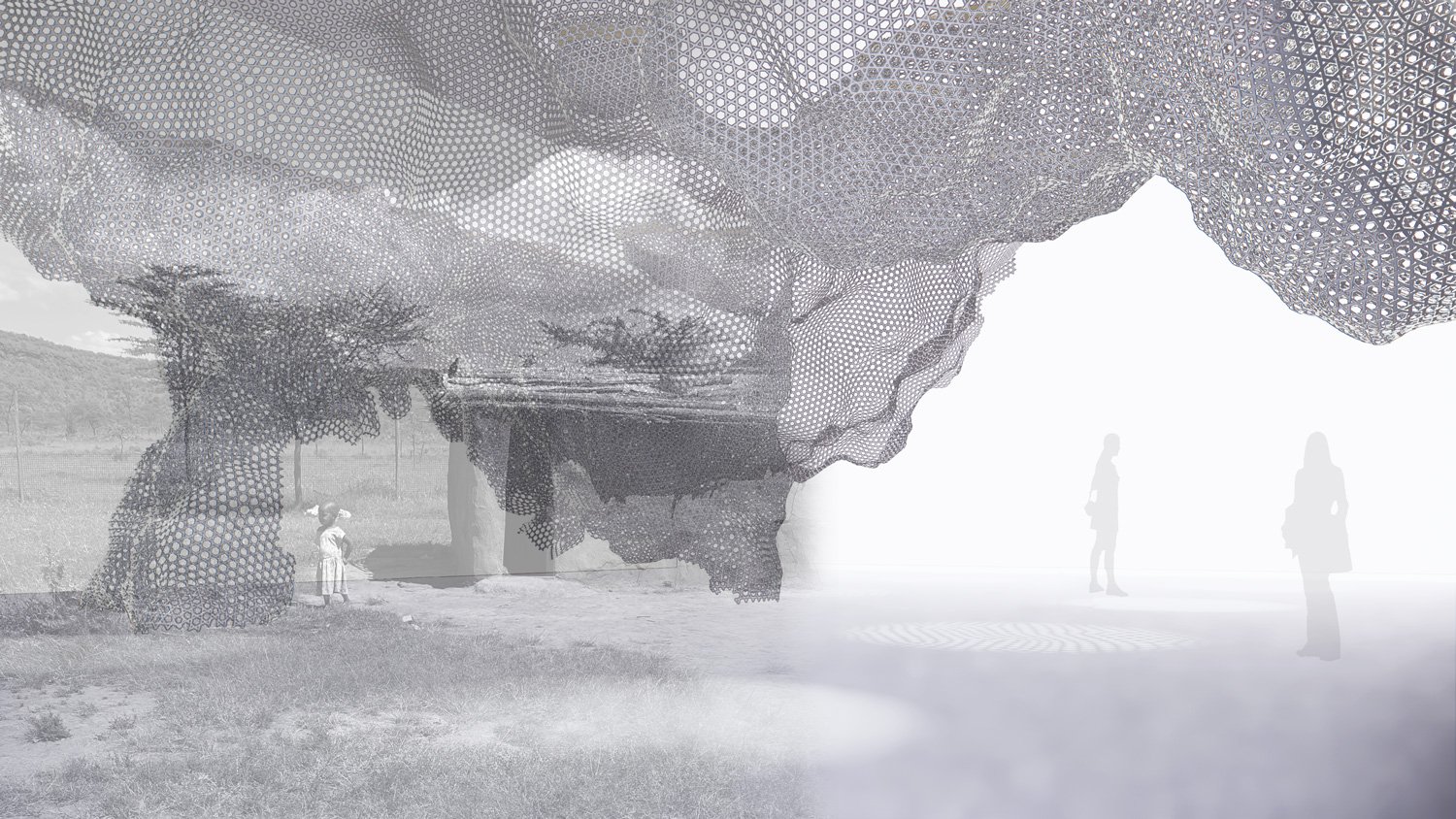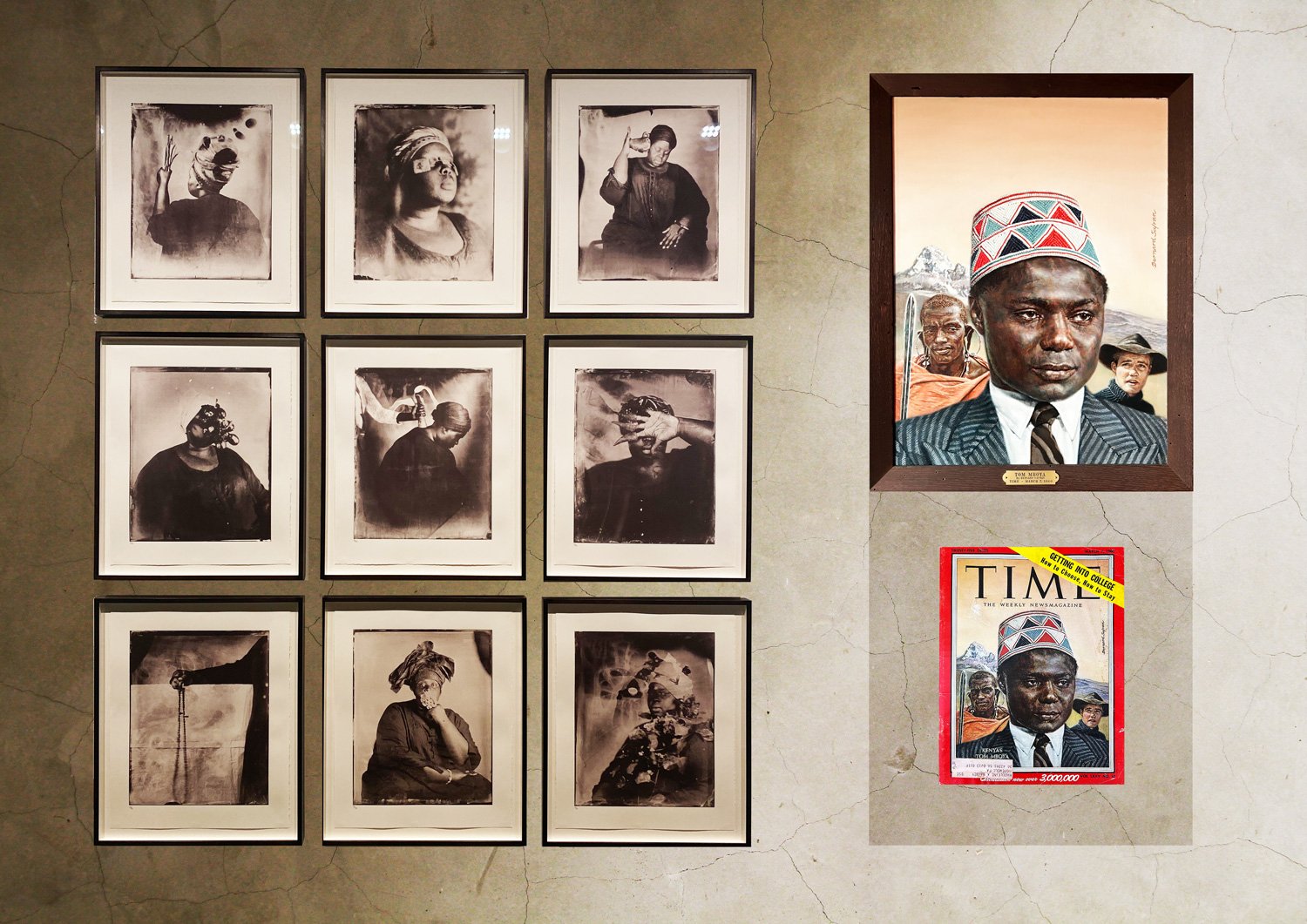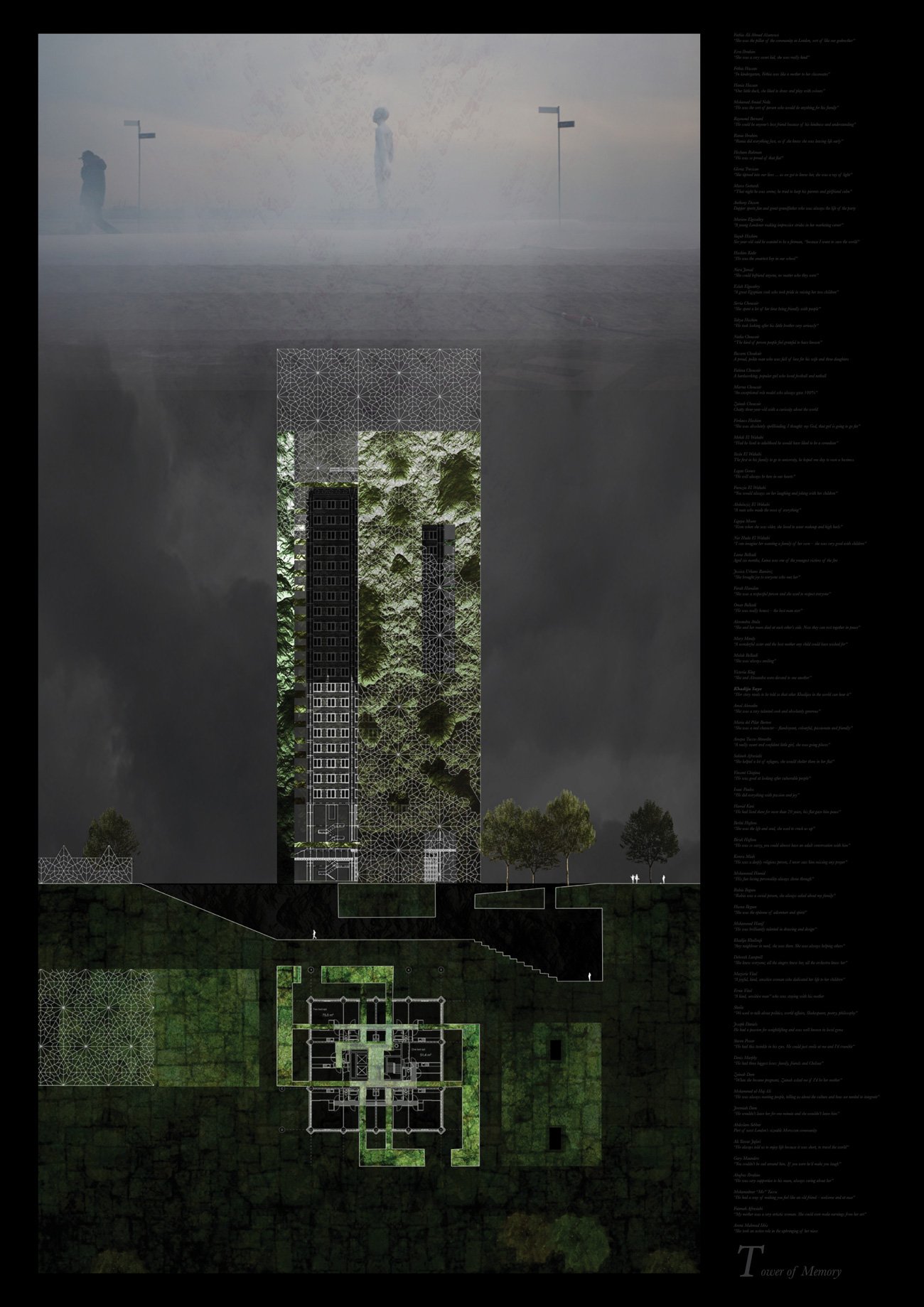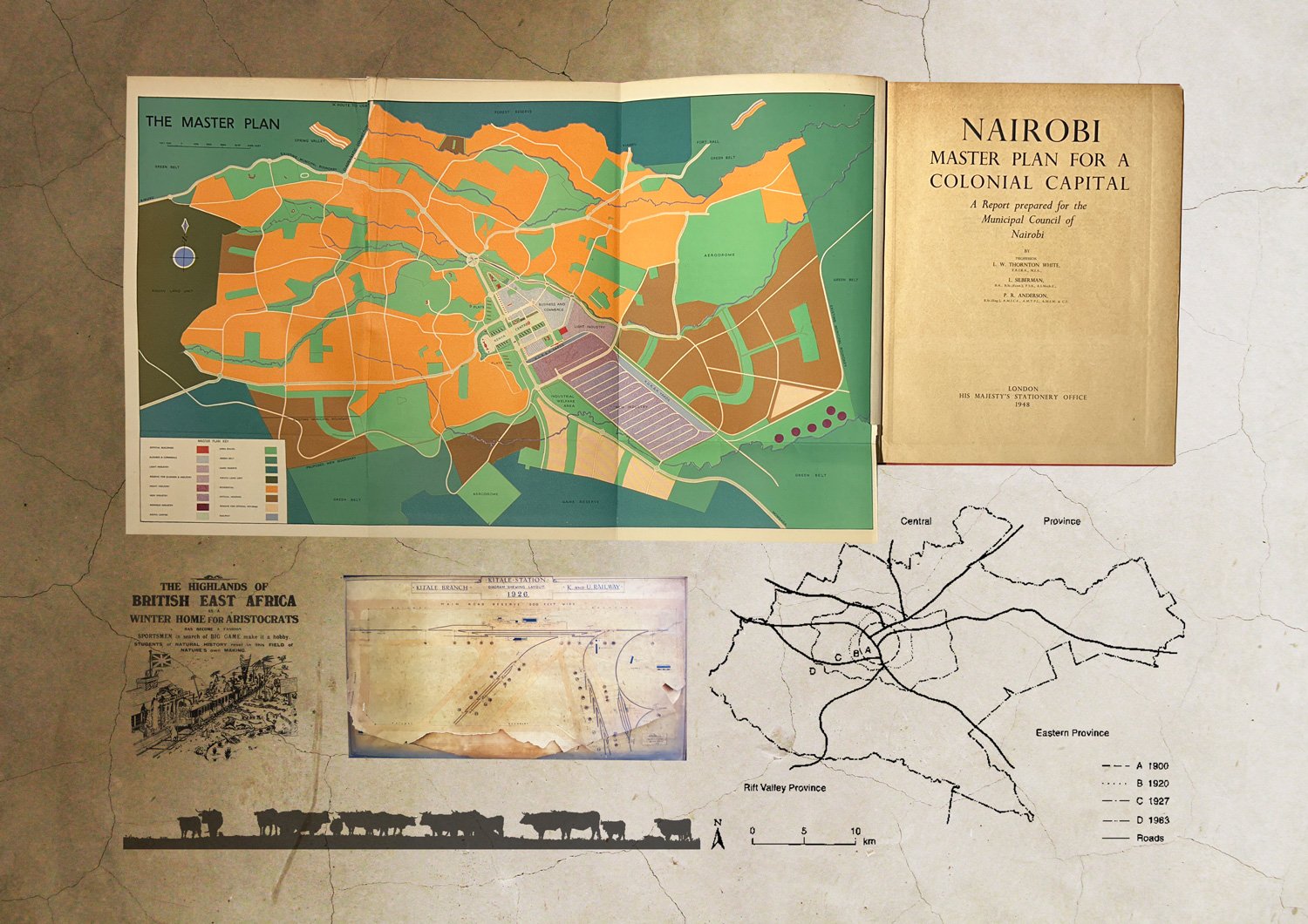ANTHROPOCENE MUSEUM 7.0 | New Age Africana
Cave_bureau was featured in the sixth and final instalment of The Architect’s Studio solo exhibition at Louisiana Museum of Modern Art, in Humlebaek, Denmark. At its heart was a collaboration between two museum institutions that we described as a co-curatorial effort of exhibition planning and experiments in museology. This instalment became a compilation of the Anthropocene museum archive, and a microcosm of repair between the divided progeny of our shared human ancestors who left Africa thousands of years ago, and those who remained on the continent.
This joint effort to confront the complicated times of imperial and colonial transgression that Denmark shared, was a site where we revisited the times of trauma that cross-sectioned multiple lands, cultures and so-called past civilisations. An exploration into the potential for architecture to generate pathways to read trauma and healing; and an invitation for the audience to look at new ways to read a museum beyond the confines of any building to bring us together.
Several readings of the caves has led to collaborative installations, which through materials and techniques from both Kenya and Denmark has opened conjoined histories of the West and East African slave trades. The Anthropocene Museum 7.0 is an introduction and opening of a new age museum typology and programme that began on the continent of Africa almost eight years ago, and ancestrally even further back, migrating outside the continent and now returning to manifest in the last instalment of Anthropocene Museum 10.0 on Suswa mountain within the Great Rift Valley.
We were captivated by Louisiana Museum’s subterranean morphology where the gallery buildings cuts over, under, and through the Humlebaek hillside. The production drawings express our early intentions to connect and exploit this cavernous condition with a philosophy to look at ways to perceive both the void and the natural negative space that moulds it. The cave became both the subject and the site condition where we co-curated 720 square meters spread across two levels in room N24 & N25.
Door of No Return Installation: In collaboration with Joseph Conteh: The groin arch - a curving edge formed by the intersection of two vaults. The Cape coast castle in Ghana was used to hold enslaved people, and channel them onto the transatlantic slave ships. We three dimensionally scanned this groin arch that framed the door of not return.
We then transposed the soffit of this structure to frame the opening of our exhibition in memory of the millions of enslaved people forced through the loins of this castle on the West African coast. For centuries different European powers controlled it, with Denmark having traded 110,000 slaves between 1660 - 1806.
This architectural feature functioned with devastating precision to lead human beings onto the dreaded transatlantic slave ships. The sequence of drawings above frame the wider castle infrastructure, as a silent but tragically complicit device. In reverse we reflect on this same doorway as an opening to reparation and repair that can no longer be ignored, or closed again.
Entrance Installation into the Cave_bureau exhibition
Kagome weave technology
Our primary installation was developed and built over a six month period in partnership with the Royal Danish Academy, CITA, Center for Information Technology and Architecture. The Japanese Kagome basket weaving technique was used to realise the construction of this 1:1 section of the Shimoni slave cave opening. At approximately 300 of the 1,000 square meter cave, the structure was hand-woven from 350kg of low-impact, renewable rattan material from Indonesia, a light, strong, vine-like palm that grows across southeast Asia and Africa, and that can be fully reused. The installation was developed as part of a broader investigation of ways to build large complex structures by hand that the community in Kenya can employ to serve their immediate and broader infrastructural needs.
“This material interlacing technique is based on a trihexagonal tiling, which, if followed systematically, results in regular planar weaves. However, a fundamental property of Kagome technique is the ability to induce double curvature into the weave by introducing singularities into the regular lattice. A singularity refers to a hexagonal cell that has been exchanged for an alternative polygon. Introducing a lesser sided polygon induces synclastic (positive gaussian) curvature, whereas greater sided polygons induce anti-clastic (negative gaussian curvature). This provides the basis for achieving near-net approximations of complex morphologies”. Phil Ayres CITA.
Museum Collection
We explored an exchange of museum collections, showcasing the Louisiana Museum’s recent acquisition of the late Khadija Saye’s, work, in this space we breathe, 2017. The exhibition opening coincided with London’s Grenfell Tower, fire tragedy six years prior, where Khadija lost her life. To reflect on this we shared an architectural tribute to her and the many other lives lost on the 14th of June 2017. Our memorial drawing proposed that the Grenfell Tower be transformed into a vertical park of memory for the many lives that were lost that day due to the greed of developers and neglect of the British government.
In parallel we opened the Anthropocene Museum collection with our 1960 painting by the artist Bernard Safran, of Tom Mboya, the late pan African leader who was later assassinated in 1969, the painting featured on the Times magazine’s 1960 issue.
Finally was the original booklet copy of the 1948, Masterplan of Nairobi, a former colonial capital, and close to it was our museum artefact shelve, where we showcased African artist works, while the empty shelves reflected on the many stollen artefacts kept in museums and private collections around the world that need restitution back to Africa.
Louisiana Channel feature
Cave_bureau AM. 7.0 : Spaces of Trauma, Spaces of Healing
